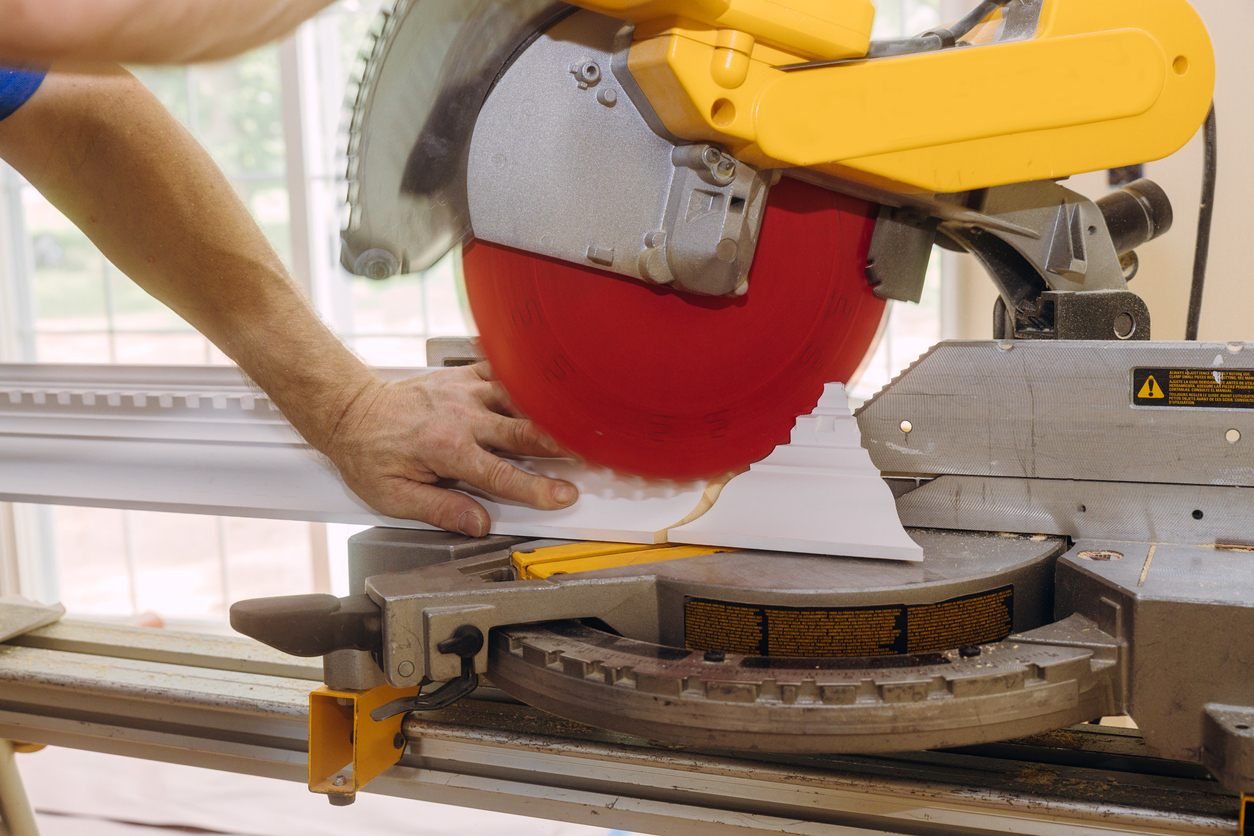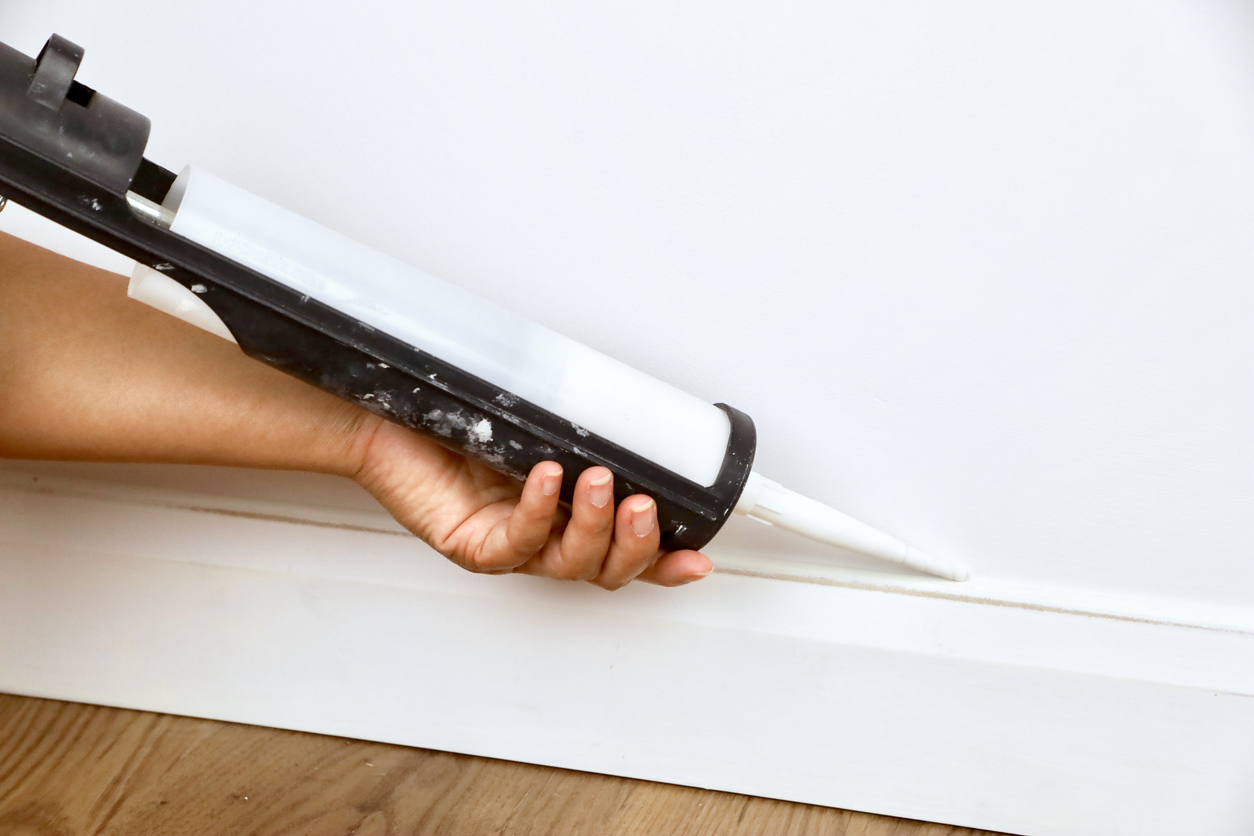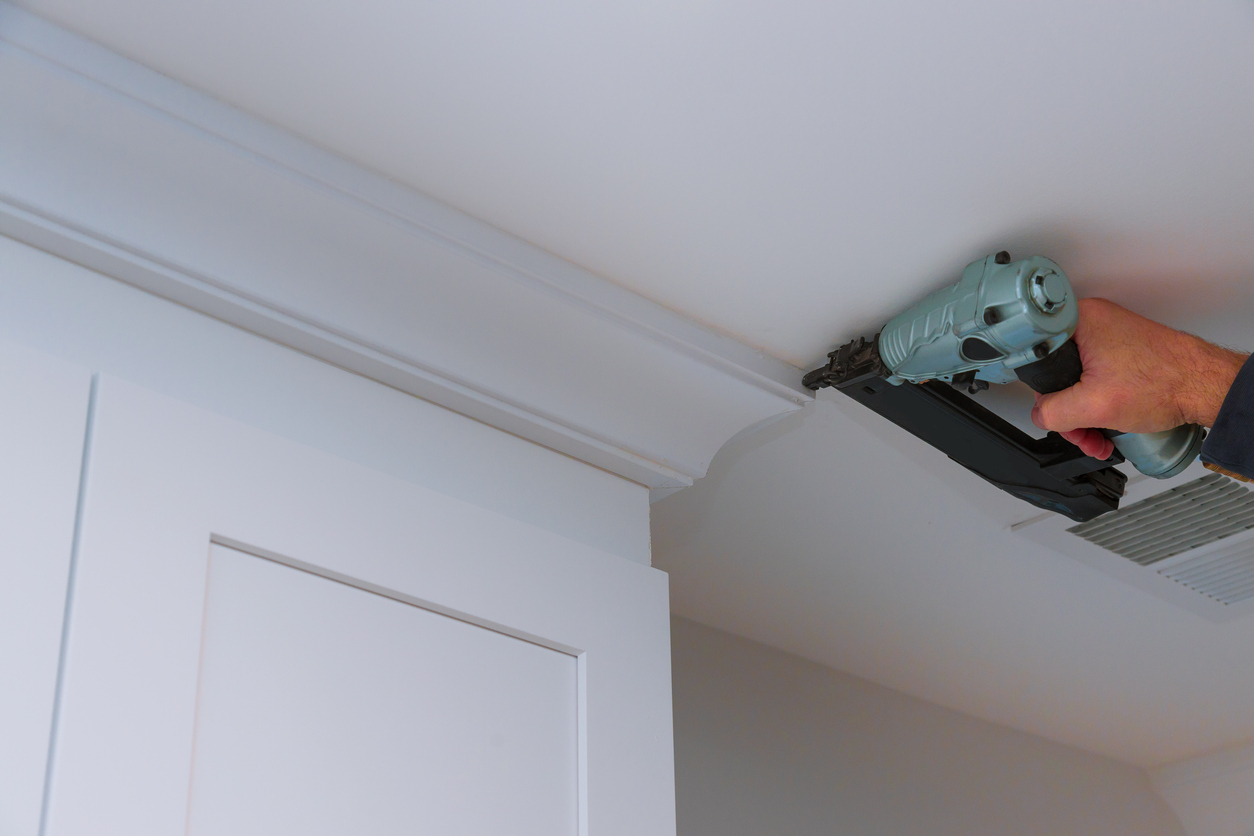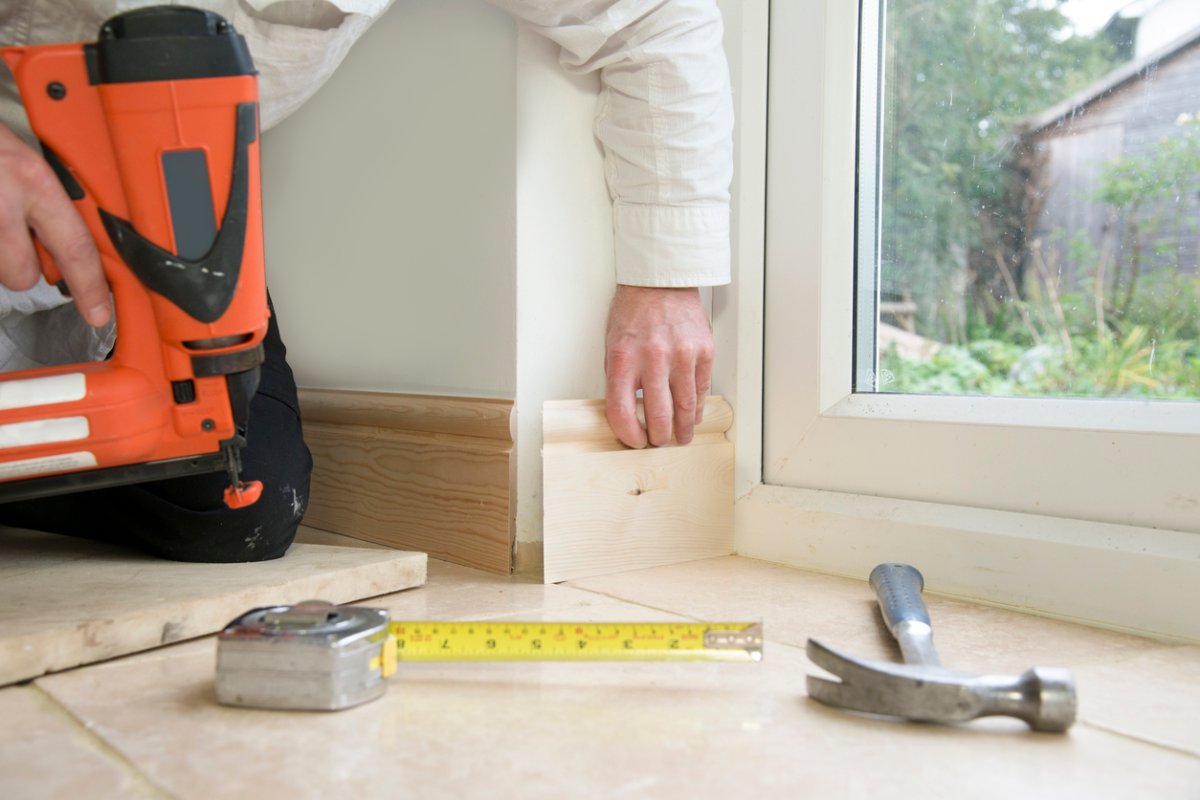We may earn revenue from the products available on this page and participate in affiliate programs. Learn More ›
The trim installation stage of any interior project can be tremendously rewarding. Baseboard and crown molding can turn a basic drywall and paint project into a polished work of art. If you’ve always admired fine trim work but aren’t sure where to start, you’re probably feeling a little intimidated. There’s no need to fret. By familiarizing yourself with these tips for installing trim, you’ll be well on your way to a professional finish that you can take pride in.
RELATED: 9 Ways to Dress Up a Room with Molding
1. Gather the right tools for installing trim.
Making accurate cuts that result in tightly mitered corners can be a challenge without a compound miter saw. Likewise, hand-nailing baseboards and crown molding can be a true labor. While having a full complement of tools would be ideal, it may not be possible for you. At the least, you’ll want to purchase, rent, and/or borrow the following tools:
- Compound miter saw
- Finish nail gun
- Air compressor with a hose
- Tape measure
The most important tool of all is a sharp pencil. A high-quality pencil will be worth its weight in gold on any finish carpentry project. The difference between a good and great trim installation may be less than 1/32 of an inch, so make sure you keep your pencil sharp to achieve the best results.
2. Calculate how much trim you’ll need, and buy a bit more than you think you need.
Don’t let a material miscalculation delay your project. You’ll want to purchase about 20 percent extra material to account for mistakes, offcuts, and overlapping joints. Luckily, there’s an easy rule of thumb for determining how much baseboard or crown molding you need. Measure the length of each wall from corner to corner, subtracting any openings for doors or closets. Now double the value for one of the shorter walls. (By doubling the value of one of the walls, you’re leaving yourself a buffer.) Add up these measurements to find how much trim to purchase for your project.
Tip: Your local home improvement store will sell baseboard and crown molding in 8-foot and 12-foot lengths, so you should be able to trim an average 16- to 20-foot living room wall with two pieces of molding.

3. Use a compound miter saw to make accurate cuts.
Compound miter saws make quick work of cutting trim. These power tools have fast-spinning saw blades that cut through wood quickly and accurately. Compound miter saws have rotating beds with preset detents that click into place at the most common cutting angles. Even beyond that, they also tilt from side to side in order to cut compound angles for complicated crown molding joints.
Use a sharp pencil to make an accurate mark on the board where you need to cut. Without triggering the saw, lower the blade so you can line it up precisely with your mark. Once you’re satisfied with the blade’s alignment, lift the saw up so the blade isn’t touching the workpiece. Now trigger the saw, let the blade get up to speed, and carefully lower it into your trim board. Once the sawdust settles, you should have an accurately-cut piece of trim.
The procedure for cutting mitered angles is similar, but they require you to set the saw to the proper angle. These saws have handles that release the saw bed and allow you to turn it to the appropriate angle. For a 90-degree corner, you’ll want to set the saw to the appropriate 45-degree detent. Once you lock the bed back into place, you can proceed with your cut as normal.
Remember to pay attention to which side of the 90-degree mark that you set your saw, as this will determine whether you’re making an inside or outside cut. A board to the left of the saw with a negative 45-degree cut will result in a miter for an inside corner, while a positive 45-degree cut is meant for an outside corner. If you’re cutting your board to the right of the saw blade, reverse these rules.
For safety’s sake, be mindful of where your hands and fingers are in relation to the blade. Also, make sure you’re wearing safety glasses.

4. Get to know the three types of joints used when installing trim.
When it comes time to install trim around the corners of your room or walls longer than the typical run of trim, use these three joints.
- Coped joints: Coped joints are ideal for inside corners. Once cut at the appropriate inside angle (typically 45 degrees), the profile of the molding is followed closely with a coping saw. The saw should be held at an angle to back-cut the material slightly. The resulting pattern then fits precisely over the adjacent trim piece, creating a puzzle piece-like fit.
- Miter joints: Outside corners can be formed by cutting two boards at 45 degrees and fitting them together at a 90-degree angle where two walls meet. Inside angles can be cut using the same procedure, but most professionals prefer the coped method.
- Scarf joints: Make two shorter boards appear as one long piece by using a scarf joint. Begin by cutting the ends of two boards with overlapping 45-degree angles across their faces. When installing these boards on the wall, marry these two angles to make the joint disappear. Be sure to nail through the joint for the best results.
With any of these joints, you may still find a slight gap that requires additional work. Placing shims between the baseboard and the wall is a great way to close a small gap in an inside corner. For an outside corner, gluing and nailing through the joint before nailing to the wall will provide the best long-term results. It’s also a good idea to run a bead of caulk along the length of your moldings to finish the look and hide small gaps.

5. Paint your trim before you install it to save time and energy.
Painting crown molding on the wall is likely to leave you sore from raising your arms overhead for hours. Similarly, painting baseboards while resting your knees on the hard flooring is the pits. Painting before installing trim can be a major energy and time saver, provided you have the space to do it.
For the best results, purchase pre-primed boards whenever possible. Lay trim boards across a pair of sawhorses. Use a brush, roller, sprayer, or some combination of all three to paint your boards before your trim installation begins. Do this for two to three coats to achieve a great finish.

6. Hide nail holes using wood filler and sandpaper.
When you’re happy with how your corner looks, nail into the lower 1½ inch of the trim with 2-inch finishing nails spaced roughly 16 inches apart. Nailing into the lower third of the molding increases the chance that you’ll hit the bottom plate inside of the wall. If installing crown molding, you’ll want to nail into the joists and studs at the top and bottom of the molding, which are usually every 16 inches. Save leftover paint (or stain) for after you’ve nailed the trim in place for touch-ups.
Camouflage those nail holes with a wood filler until they’re level with the wood, then paint or stain for the best-looking results. Apply a small amount of the filler with the tip of your finger and to each nail hole. Wait approximately two hours for the filler to cure before using a sheet of 220-grit sandpaper to lightly sand away the excess material. This will leave a smooth finish and make the holes disappear. Just touch it up with paint or stain, and your project is complete.

